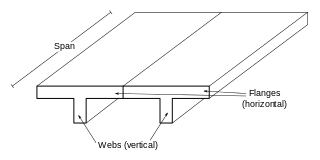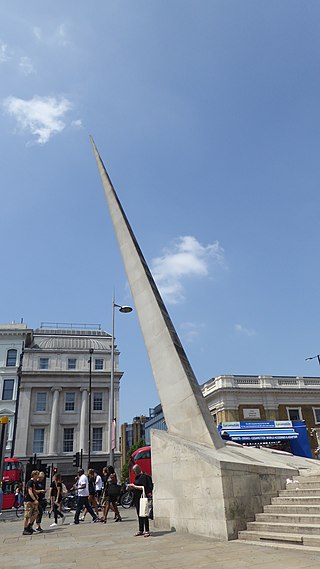Part 1-1: General rules, and rules for buildings
EN 1992-1-1 deals with the rules and concepts required for designing concrete, reinforced concrete and prestressed concrete structures. There are three main stages are involved in the design of elements in these structures:
- Pre-design: Before any other designing is undertaken, the limit states of durability and fire design are considered in order to ascertain the required cover to the reinforcement, the minimum size of members and the appropriate concrete strength.
- Ultimate limit state: Accurate section sizes are determined for corresponding concrete properties (usually compressive strength). The size of the reinforced concrete element and the quantity of reinforcement to resist bending, shear and torsional forces are determined.
- Serviceability limit state. In this phase of the work, checks are made to ensure the serviceability criteria (i.e. that the building is comfortable to use) are met.
Pre-design
Pre-design stage involves selecting initial section sizes (e.g. reinforcement diameter), from which the minimum required cover depth could be selected to attain the required fire resistance. Although these initial estimates are likely to change throughout the design, giving considerable amount of thought at this stage is likely to save a lot of time later on.
Ultimate limit state
Ultimate limit states are often more critical for concrete structures. Consequently, when design is undertaken, the ultimate limit state is designed for and then if necessary serviceability is checked for. However, element sizes ascertained in the pre-design stage usually ensure serviceability criteria are met.
Serviceability limit state
Serviceability requirements to check for deflection and crack widths are generally satisfied by observing the following details.
- Checking and keeping within permitted span/effective depth ratios
- Providing not less than the minimum permitted percentage of reinforcement.
- Limiting the spacing of tension reinforcement.
- Using “deemed to satisfy” empirical methods.
If actual deflections are required, then the structure must be analysed for the serviceability limit state, using design service loads. The deflections obtained will generally be short term values and will be multiplied by a suitable factor to allow for creep effects and to give realistic long term values.
Contents
- General
- Basis of design
- Materials (concrete and steel) including
- Durability and cover to reinforcement
- Structural analysis
- Ultimate limit states
- Serviceability limit states
- Detailing reinforcement and prestressing tendons
- Detailing members, and particular rules
- Precast elements - additional rules
- Lightweight aggregated concrete structures
- Plain and lightly reinforced concrete structures

Reinforced concrete, also called ferroconcrete, is a composite material in which concrete's relatively low tensile strength and ductility are compensated for by the inclusion of reinforcement having higher tensile strength or ductility. The reinforcement is usually, though not necessarily, steel bars (rebar) and is usually embedded passively in the concrete before the concrete sets. However, post-tensioning is also employed as a technique to reinforce the concrete. In terms of volume used annually, it is one of the most common engineering materials. In corrosion engineering terms, when designed correctly, the alkalinity of the concrete protects the steel rebar from corrosion.
Limit State Design (LSD), also known as Load And Resistance Factor Design (LRFD), refers to a design method used in structural engineering. A limit state is a condition of a structure beyond which it no longer fulfills the relevant design criteria. The condition may refer to a degree of loading or other actions on the structure, while the criteria refer to structural integrity, fitness for use, durability or other design requirements. A structure designed by LSD is proportioned to sustain all actions likely to occur during its design life, and to remain fit for use, with an appropriate level of reliability for each limit state. Building codes based on LSD implicitly define the appropriate levels of reliability by their prescriptions.

A beam is a structural element that primarily resists loads applied laterally to the beam's axis. Its mode of deflection is primarily by bending. The loads applied to the beam result in reaction forces at the beam's support points. The total effect of all the forces acting on the beam is to produce shear forces and bending moments within the beams, that in turn induce internal stresses, strains and deflections of the beam. Beams are characterized by their manner of support, profile, equilibrium conditions, length, and their material.

Prestressed concrete is a form of concrete used in construction. It is substantially "prestressed" (compressed) during production, in a manner that strengthens it against tensile forces which will exist when in service.

The Eurocodes are the ten European standards specifying how structural design should be conducted within the European Union (EU). These were developed by the European Committee for Standardization upon the request of the European Commission.

Precast concrete is a construction product produced by casting concrete in a reusable mold or "form" which is then cured in a controlled environment, transported to the construction site and maneuvered into place; examples include precast beams, and wall panels for tilt up construction. In contrast, cast-in-place concrete is poured into site-specific forms and cured on site.

A T-beam, used in construction, is a load-bearing structure of reinforced concrete, wood or metal, with a T-shaped cross section. The top of the T-shaped cross section serves as a flange or compression member in resisting compressive stresses. The web of the beam below the compression flange serves to resist shear stress. When used for highway bridges the beam incorporates reinforcing bars in the bottom of the beam to resist the tensile stresses which occur during bending.

In structural engineering, a prestressed structure is a load-bearing structure whose overall integrity, stability and security depend, primarily, on prestressing: the intentional creation of permanent stresses in the structure for the purpose of improving its performance under various service conditions.
BS 5400 was a British Standard code of practice for the design and construction of steel, concrete and composite bridges. It was applicable to highway, railway and pedestrian bridges. It has now been replaced by the European standard, BS EN 1991-2_2003 and other Eurocodes for the design of steel and concrete structures.

Structural engineering depends on the knowledge of materials and their properties, in order to understand how different materials resist and support loads.

In the Eurocode series of European standards (EN) related to construction, Eurocode 3: Design of steel structures describes how to design steel structures, using the limit state design philosophy.

In the Eurocode series of European standards (EN) related to construction, Eurocode: Basis of structural design establishes the basis that sets out the way to use Eurocodes for structural design. Eurocode 0 establishes Principles and requirements for the safety, serviceability and durability of structures, describes the basis for their design and verification and gives guidelines for related aspects of structural reliability. Eurocode 0 is intended to be used in conjunction with EN 1991 to EN 1999 for the structural design of buildings and civil engineering works, including geotechnical aspects, structural fire design, situations involving earthquakes, execution and temporary structures.

In the Eurocode series of European standards (EN) related to construction, Eurocode 7: Geotechnical design describes how to design geotechnical structures, using the limit state design philosophy. It is published in two parts; "General rules" and "Ground investigation and testing". It was approved by the European Committee for Standardization (CEN) on 12 June 2006. Like other Eurocodes, it became mandatory in member states in March 2010.

In the Eurocode series of European standards (EN) related to construction, Eurocode 4: Design of composite steel and concrete structures describes how to design of composite structures, using the limit state design philosophy. It was approved by the European Committee for Standardization (CEN) on 4 November 2004. Eurocode 4 is divided in two parts EN 1994-1 and EN 1994-2.

In the Eurocode series of European standards (EN) related to construction, Eurocode 5: Design of timber structures describes how to design buildings and civil engineering works in timber, using the limit state design philosophy. It was approved by the European Committee for Standardization (CEN) on 16 April 2004. It applies for civil engineering works from solid timber, sawn, planned or in pole form, glued laminated timber or wood-based structural products, or wood-based panels jointed together with adhesives or mechanical fasteners and is divided into the following parts.

In the Eurocode series of European standards (EN) related to construction, Eurocode 6: Design of masonry structures describes how to design buildings and civil engineering works, or parts thereof, in unreinforced, reinforced, prestressed and confined masonry, using the limit state design philosophy. It was approved by the European Committee for Standardization (CEN) on 23 June 2005.

Kolbjørn Saether P.E., M.ASCE was an American structural engineer in the City of Chicago for 47 years. Saether dedicated his life to engineering and was known as a leader in his field. He was a past director of the Structural Engineers Association of Illinois and was the organization's president from 1980 to 1981. During his career he developed innovative engineering solutions for skyrise building construction that are now part of the Chicago skyline, published theoretical insights to enhance the state of the art in structural engineering, and patented novel techniques to advance the art of building construction.
This page is a glossary of Prestressed concrete terms.
PC Strand, or prestressed concrete steel strand, is a twisted steel cable composed of 2, 3, 7 or 19 high strength steel wires and is stress-relieved (stabilized) for prestressed concrete or similar purposes.

Post-tensioned stone is a high-performance composite construction material: stone held in compression with tension elements. The tension elements can be connected to the outside of the stone, but more typically uses tendons threaded internally through a duct formed from aligned drilled holes.

















